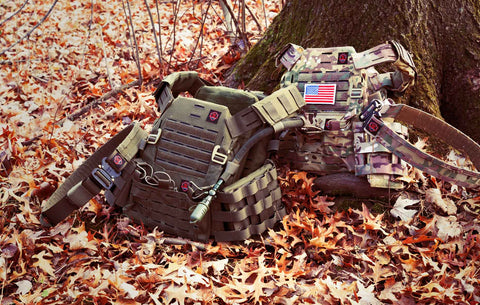When it comes to tactical operations, the efficiency and readiness of your gear are paramount. A tactical vest stands out as an essential component, offering not just protection but also strategic advantages by keeping necessary equipment within reach.
For those new to tactical gear, understanding how to select the right type of vest is crucial. Learn more in our Essential Guide to Selecting the Perfect Tactical Vest.
In this comprehensive guide, we’ll explore the facets of using a tactical vest effectively, ensuring you're prepared for any situation.
What Is a Tactical Vest?
A tactical vest is more than just a piece of military gear; it's a critical tool for law enforcement, security personnel, and outdoor enthusiasts. Designed to accommodate various tactical necessities such as magazines, communication devices, and medical kits, these vests are engineered for high performance and quick access.
Choosing the Right Tactical Vest
Understanding Different Types
- Combat Vests: Primarily used by the military and law enforcement for high-threat scenarios.
- Modular Tactical Vests (MTVs): These allow for customization and are favored for their adaptability.
- Plate Carrier Vests: Built to hold ballistic plates, offering maximum protection.
Key Features to Consider
- Material Durability: Opt for high-quality, wear-resistant materials.
- Storage Capacity: Ensure it has ample pockets and compartments.
- Comfort and Fit: A well-fitting vest reduces fatigue and increases mobility.
How to Wear a Tactical Vest
Adjusting for Fit
- Step 1: Loosen all straps before wearing.
- Step 2: Position the vest centrally and tighten straps for a secure fit.
- Step 3: Check for unrestricted movement.
Essential Gear Placement
- Front Pockets: Ideal for ammunition and tools.
- Back Compartments: Suitable for hydration packs and larger items.
- Side Sections: Good for quick-access items like flashlights.
Tactical Vest Maintenance Tips
Routine Cleaning
- Spot Cleaning: Address spills immediately to avoid staining.
- Deep Cleaning: Use mild soap and water, avoiding harsh chemicals.
Inspection and Repair
- Regularly inspect for wear and tear.
- Repair or replace damaged parts promptly to maintain functionality.
Regular maintenance not only extends the life of your vest but also ensures it remains reliable and ready for use. Further detailed maintenance advice can be found in our article on Plate Carrier Care: Essential Cleaning and Maintenance Tips.
Tactical Training with Your Vest
Practicing with Gear
Engage in regular training sessions to become proficient in accessing your equipment quickly.
Scenario-Based Drills
Participate in drills that mimic real-life situations to enhance your readiness and response times.
Conclusion
A tactical vest is a vital tool for enhancing your operational efficiency. By choosing the right vest, maintaining it properly, and training regularly, you ensure that you’re always prepared, no matter what challenges you face.
Tactical Vest Usage and Maintenance: Key Questions Answered
How often should I replace my tactical vest?
It depends on usage and condition, but generally every 5 years or after any significant damage.
Can a tactical vest stop a bullet?
Only if equipped with ballistic plates specifically designed for that purpose.
Is it legal to wear a tactical vest in public?
Laws vary by location; always check local regulations before wearing a tactical vest publicly.
How much does a good tactical vest cost?
Prices can range from $50 to over $300, depending on the features and quality.
What is the best way to store a tactical vest?
Keep it in a cool, dry place away from direct sunlight to prevent degradation.




